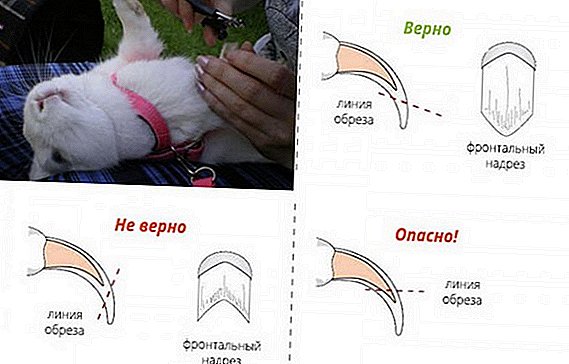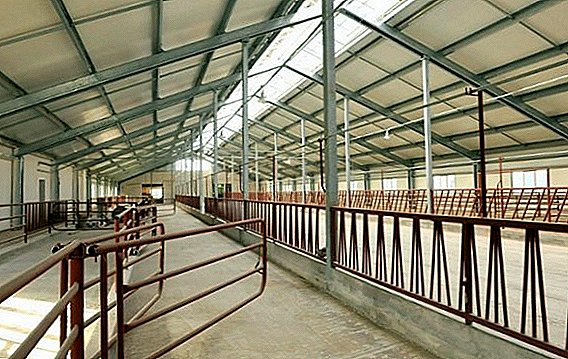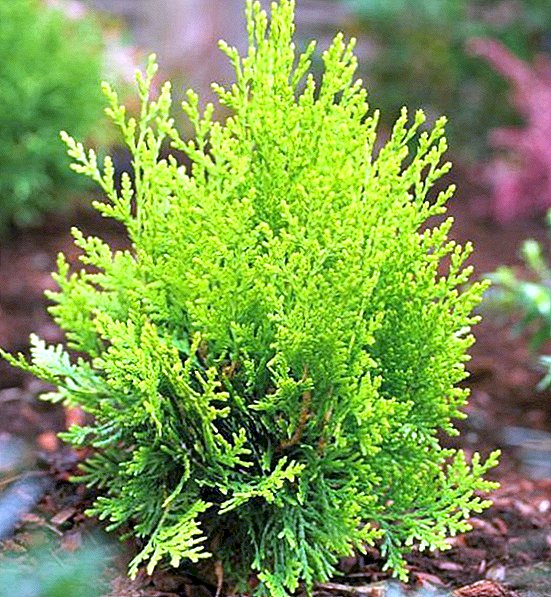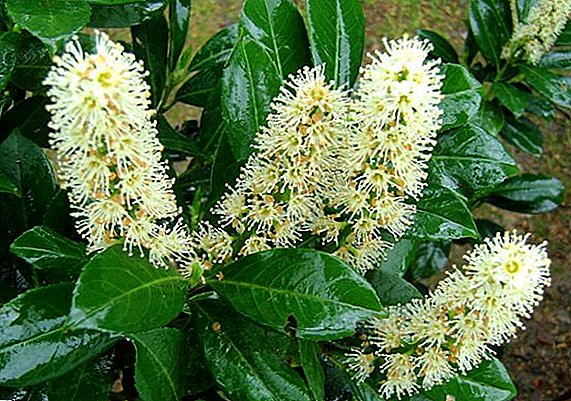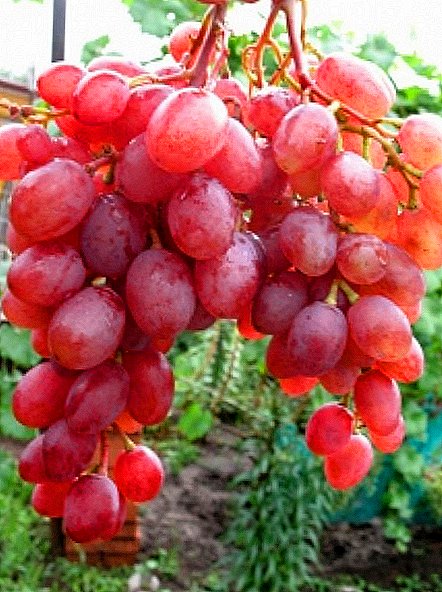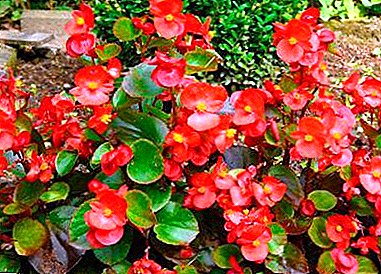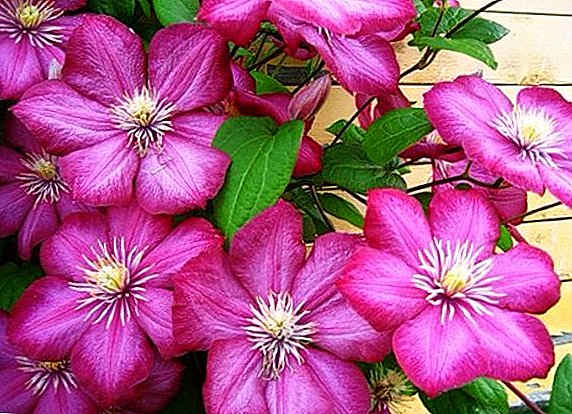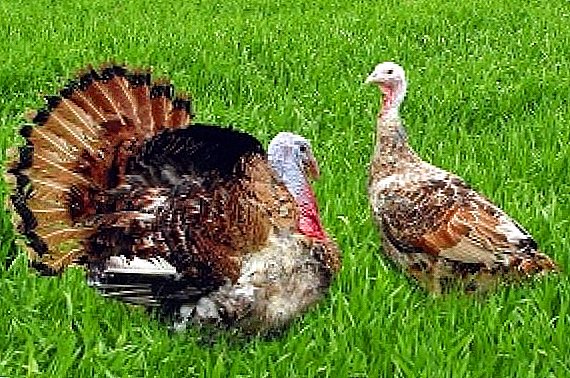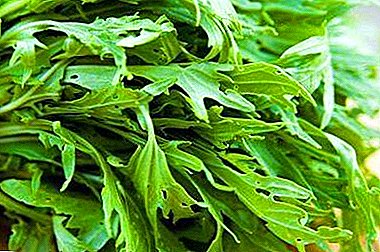
In recent years, new varieties of well-known plants have appeared on the Russian market. These include and vegetable from East Asia - Japanese cabbage.
It is also called leafy or lettuce cabbage. This cabbage is not at all like the white cabbage we are used to, although it belongs to the cruciferous family. In the article we will talk about the different varieties of Japanese cabbage: Mizuna, Little Mermaid and Emerald pattern. You will learn where you can buy the seeds of this crop for growing, how to plant and care for cabbage.
Description
It is a single or biennial plant with long light green corrugated or smooth leaves up to 60 cm long, growing horizontally or upwards. The height of the lush bush - up to half a meter, the socket - lush, spreading, reaches 90 cm in diameter.
Most varieties have delicate leaves with strongly dissected edges, but there are varieties with whole, long lance-like leaves. The taste of cabbage is sweetish or spicy, reminds radishes or mustard. With two years of cultivation, Japanese cabbage forms a root vegetable with the pulp of swede taste.
The history of the species
The homeland of Japanese cabbage, despite its name, is considered to be the Pacific Coast of China. In Japan, it has been grown since the 16th century. In Europe and North America, vegetables are called Japanese mustard and have been cultivated since the 20th century. In recent years, decorative cabbage of Japan is gaining popularity in Russia.
Difference from other species
This type of cabbage does not form a head. Can be used as a decorative, as a luxurious spreading rosette with leaves of pale green, dark green or reddish brown color is very beautiful.
Advantages and disadvantages
 Culture has many advantages:
Culture has many advantages:
- contains trace elements (phosphorus, calcium, potassium, selenium, iron) and vitamins (a lot of vitamin A and E);
- low-calorie, but nutritious;
- has a more delicate taste compared to similar products due to the low content of mustard oils;
- a large amount of beta-carotene helps strengthen eyesight and rejuvenate the skin;
- can be used all summer;
- increased potassium has a beneficial effect on the cardiovascular system.
Japanese cabbage has very few disadvantages:
- It can not be stored for a long time, unlike the cabbage species we are used to, because it does not form a head of cabbage.
- If the leaves are not immediately consumed, they will wither and lose their taste.
- It accumulates nitrates easily enough - do not get carried away with nitrogen fertilizers.
Sorta
So far, only some varieties of Japanese cabbage are included in the State Register of Breeding Achievements of the Russian Federation.
The most famous among them are:
- Mermaid.
- Mizuna.
- Emerald pattern.
Mermaid
It is a mid-season variety (60-70 days) with a horizontal or slightly elevated rosette up to 40 cm in height and up to 75 cm in diameter, on which up to 60 dark green strongly dissected smooth leaves with large teeth are located on the edges.
Productivity: from one bush - 5-6.5 kg / m2.
Taste: tender, with a little mustard flavor.
Where to buy, price: EURO-SEMENA LLC, price in Moscow is 12-18 rubles, in St. Petersburg 15-19 rubles.

Mizuna
The variety is also mid-season (60-70 days), the socket is horizontally or slightly raised, up to 40 cm high and up to 65 cm in diameter, forms up to 60 dark green medium-sized smooth lyre-pinnate leaves with large cuts along the edge.
Productivity: from a bush - 6.7 kg / m2.
Taste: tender, spicy.
Where to buy, price: LLC "SEMKO-JUNIOR", the price in Moscow is 29 rubles, in St. Petersburg 13 rubles.

Emerald pattern
The variety is medium early (60-65 days), the outlet is slightly elevated, up to 35 cm tall and up to 60 cm in diameter, forms a lot - up to 150. They are medium in size, green, smooth, with large incisions along the edge, of a lyre-pinnate form.
Productivity: from a bush - 5-5,2 kg / m2.
Taste: has an apple shade.
Where to buy, price: LLC AGROFIRMA POISK, price in Moscow is 16-18 rubles, in St. Petersburg 21 rubles.

Planting and care
Sow seeds in the soil in early spring or in the second half of summer, as the culture is quite cold-resistant (can withstand frosts down to -4 ° C) and quickly reaches technical ripeness.
Important! Japanese cabbage tolerates transplant very poorly.
Landing
For the cultivation of Mizuna, the Little Mermaid and the Emerald seed pattern to be successful, it is necessary to create favorable conditions. Plot for this choose sunny, open - in the light of cabbage forms the maximum number of leaves. He likes light, neutral, well-drained soil: if the area loam, you must add sand and black soil or humus before the formation of loose soil.
The bed is dug up as soon as the snow melts, well shed with warm water and covered with black film to warm up. For cabbage planting, the ground should warm up to +4 ° C.
Sowing is done in this way:
- In the garden, grooves are made with a depth of half a centimeter at a distance of 30 cm.
- Grooves shed warm water.
- Arrange the seeds at a distance of 20-30 cm. They should germinate on the 3-4th day at a soil temperature of 3-4 ° C. If crops are frequent, they will have to be thinned out, which is undesirable, since cabbage sprouts are very tender and easily damaged.
- Sprinkle seeds with loose soil or sand.
- Cover with spunbond or lutrasil before germination.
The optimum temperature for plant growth and development is 15-20 ° C.
Watering
 Culture tolerates heat, but this does not mean that it does not need to moisten the soil. After the emergence of seedlings watered only when the ground becomes dry.
Culture tolerates heat, but this does not mean that it does not need to moisten the soil. After the emergence of seedlings watered only when the ground becomes dry.
Young sprouts are very tender, so you need a watering can or a hose with a small spray. This is necessary in order not to damage the young shoots of the plant. An adult plant watering requires rare, only in extreme heat, but plentiful, so that the leaves grow juicy and tasty. Cabbage is easily restored after drought, but watering should be infrequent, but permanent.
Top dressing
Twice during the growing season Japanese cabbage is fertilized with mineral dressings: phosphate and potash. (according to the instructions). Also use liquid organic fertilizer - biohumus.
Fertilizers containing nitrogen should not be used at all or applied only in small portions, since the culture accumulates nitrates in the green mass.
Mulching
For better conservation of moisture in the root area and for weed protection Japanese cabbage mulch - sawdust, mowed grass or straw.
Spuding it like ordinary cabbage is not necessary, as the leaves, which are not high from the soil, can start to rot from falling on the ground.
Harvesting and storage
In open ground, Japanese cabbage can grow up to three months. Periodically need to cut the leaves (as soon as they reach a length of 10-12 cm). They grow back in 8-15 days due to the awakening of the apical bud. Thus, harvesting continues throughout the summer.
Cut leaves can be consumed fresh in a salad, pickled, frozen or dried. (used as seasoning). In the fall, the cabbage bushes are uprooted, cleaned of the ground, cut off the root, leaving the petiole. In this form, they are stored in the refrigerator for up to a week.
Variety pests
The leaves of the plant are often damaged by the cruciferous flea: it gnaws through the holes and as a result the leaf becomes unsuitable for consumption. Tobacco dust helps well against it:
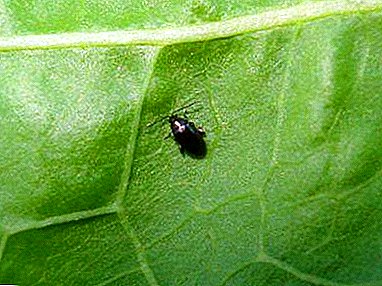 powder the bush and the ground around it;
powder the bush and the ground around it;- sprayed with a solution of 1:10.
Ordinary wood ash also serves as a simple and effective remedy:
- powder planting;
- sprayed with ash extract (prepared during the week and calculating 3 tablespoons per 1 liter of water).
Chemicals against pests are not recommended., as the plant accumulates harmful substances in the leaves. In order not to expose yourself to danger, use only natural means and in no case neglect this rule.
Possible problems and their prevention
| Wrong agrotechnology | Problem | Prevention |
|---|---|---|
| Too abundant watering | Cabbage starts to rot | Water less often only when the soil dries. |
| Top dressing with nitrogen fertilizers | Accumulates nitrates in the leaves | Use only potash and phosphate fertilizers. |
| Sowing after related crops (cabbage, radish, cress, radish, leaf mustard) | Affected by pests | Plant after tomatoes, cucumbers, potatoes, greens, legumes |
Conclusion
Japanese kale has not yet received sufficient distribution in the gardens of our country. But with each season she has more and more fans, because she does not require special care, is beautiful and very useful.


 powder the bush and the ground around it;
powder the bush and the ground around it;